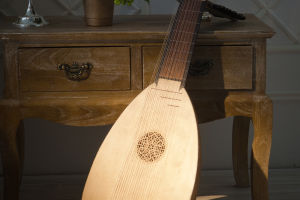Selecting the right tennis ball might seem simple, but it’s a crucial decision that can significantly impact your game.
With various brands, types, and specifications available, knowing what to look for ensures you have the right ball for your playing style, court surface, and level of experience.
From recreational play to professional matches, choosing the correct tennis ball can influence everything from speed to control. In this guide, we’ll explore the different types of tennis balls, how they are suited to various court surfaces, and key considerations for finding the best match for your needs.
1. Types of Tennis Balls
Understanding the different types of tennis balls helps in selecting the right one for your game:
Regular Duty vs. Extra Duty: Regular duty tennis balls are designed for clay and indoor courts, where their thinner felt won’t pick up too much clay or dirt. Extra duty balls, on the other hand, are made for hard courts and feature a thicker felt to withstand the rougher surface, offering better durability.
Pressurized vs. Pressureless: Pressurized balls are filled with air or gas, giving them a livelier bounce but a shorter lifespan as they lose pressure over time. Pressureless balls, though less responsive at first, become bouncier with use and last longer, making them ideal for practice or recreational play.
High Altitude Balls: These balls are designed for use in higher elevations where standard balls would bounce too much due to the thinner air. They are less pressurized to ensure consistent bounce at altitude.
Beginner and Transition Balls: For beginners or junior players, there are low-compression balls that bounce slower and lower, helping players develop better control and technique. These include red, orange, and green dot balls, each tailored to different skill levels.
2. Choosing the Right Ball for Court Surfaces
Matching your ball to the court surface is essential for optimal performance:
Clay Courts: On slower clay courts, regular duty balls are the best choice. They have thinner felt, which prevents them from picking up excessive clay, ensuring a consistent bounce. Clay courts absorb more energy, so using a ball suited for these conditions helps maintain proper speed and control.
Hard Courts: Extra duty balls are ideal for hard courts. Their thicker felt stands up to the abrasive surface and provides a good balance between durability and performance. The additional durability is essential because hard courts can wear out a ball’s felt quickly.
Grass Courts: For grass courts, players often use regular duty balls, which perform well on the faster surface. Grass courts provide lower bounce, so a lighter, more responsive ball helps maintain the pace of the game.
Indoor Courts: On indoor courts, regular duty balls also work well due to the smooth, non-abrasive surface. These balls won’t wear out as quickly, making them a great option for indoor play.
3. Key Factors to Consider When Choosing Tennis Balls
Take these elements into account to find the best tennis ball for your game:
Durability: If you play frequently, durability is a major factor. Extra duty balls offer greater longevity on hard courts, while pressureless balls are perfect for long practice sessions without losing bounce.
Player Level: Beginners benefit from using low-compression balls, which slow down the game and provide a more forgiving bounce. Intermediate and advanced players should look for balls that match the speed and bounce characteristics of the court surface.
Match or Practice: For practice, pressureless balls or slightly worn pressurized balls are cost-effective and still offer good performance. For matches or competitive play, choose fresh pressurized balls for the best bounce and feel.
Choosing the right tennis ball involves considering your playing surface, skill level, and personal preferences. From regular duty balls for clay courts to durable extra duty options for hard surfaces, selecting the correct type ensures you have the ideal ball for each game. Whether you're training, playing recreationally, or competing, understanding the nuances of tennis balls can enhance your performance and improve your overall experience on the court.


